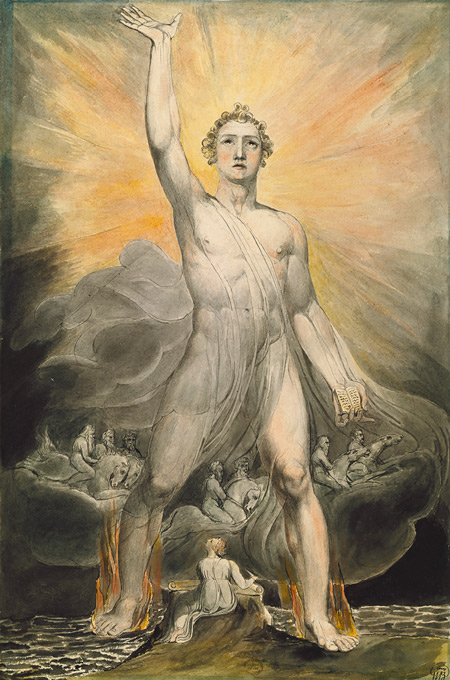Poetic Forms in Blake's Milton, Susan Fox,Page 17:
"Each of two the books of the poem [Milton] offers a range of perspectives on the central action from Eden to Ulro and from remembered past to foretold future, but in each all perspectives focus on a single instant, the instant of the purgation and union of Milton and Ololon, the instant in which past and future are joined in the abolition of time. Even those events in the poem which are clearly antecedent to its main action, the events of the Bard's Song and the creation of Beulah, are described as the action occurs: Milton decides to descend as he hears the Bard sing (and we shall see, his decision is identical with his descent), and the Daughters of Beulah sing their history as Ololon descends. Milton's descent is both simultaneous and identical with Ololon's descent; all the other actions of the poem, past and present, are merely component actions of the focal event.
The instant of their descents is the culmination of what Blake describes at the end of Book I as a kind of visionary moment:
"Every Time less than a pulsation of the artery
Is equal in its period & value to Six Thousand Years.
PLATE 29 [31]
For in this Period the Poets Work is Done: and all the Great
Events of Time start forth & are concievd in such a Period
Within a Moment: a Pulsation of the Artery."
Milton, (E 127)
... All the actions of the poem occur in the last measurable segment of the moment, the last fragment of time itself, the instant before apocalypse puts an end to time."
 |
|
Wikipedia Commons Angel of Revelation |
[1] And I saw another mighty angel come down from heaven, clothed with a cloud: and a rainbow was upon his head, and his face was as it were the sun, and his feet as pillars of fire:
[2] And he had in his hand a little book open: and he set his right foot upon the sea, and his left foot on the earth,
[3] And cried with a loud voice, as when a lion roareth: and when he had cried, seven thunders uttered their voices.
[4] And when the seven thunders had uttered their voices, I was about to write: and I heard a voice from heaven saying unto me, Seal up those things which the seven thunders uttered, and write them not.
[5] And the angel which I saw stand upon the sea and upon the earth lifted up his hand to heaven,
[6] And sware by him that liveth for ever and ever, who created heaven, and the things that therein are, and the earth, and the things that therein are, and the sea, and the things which are therein, that there should be time no longer:
.




